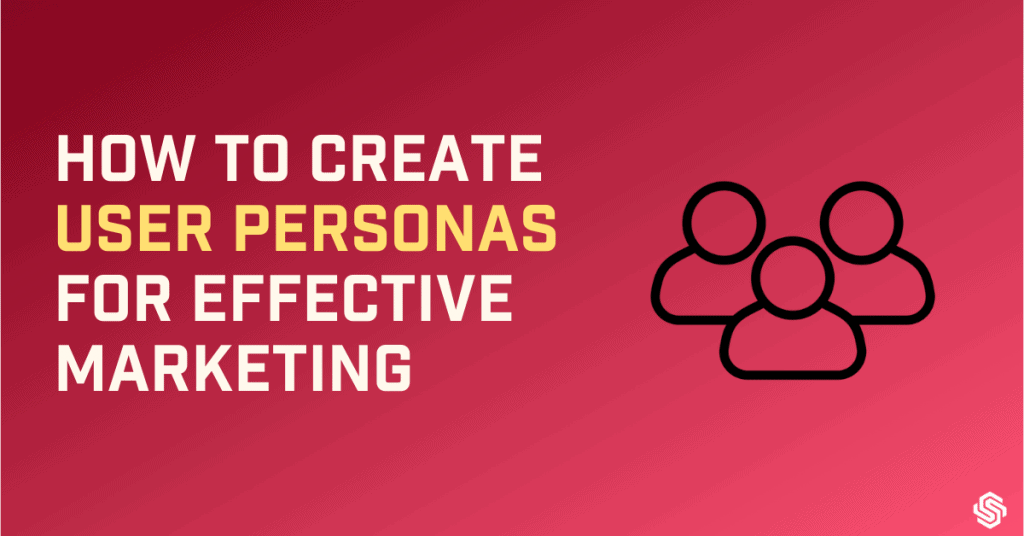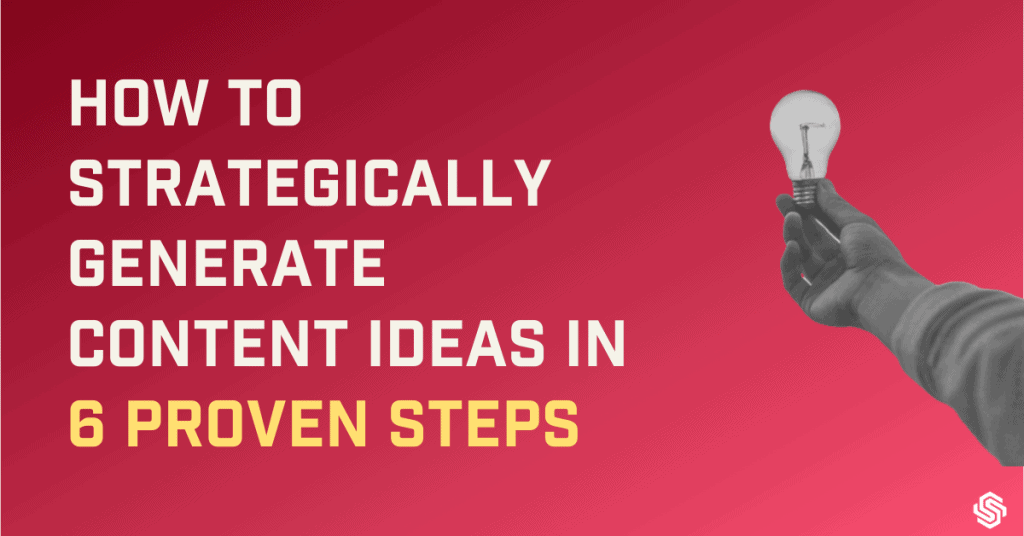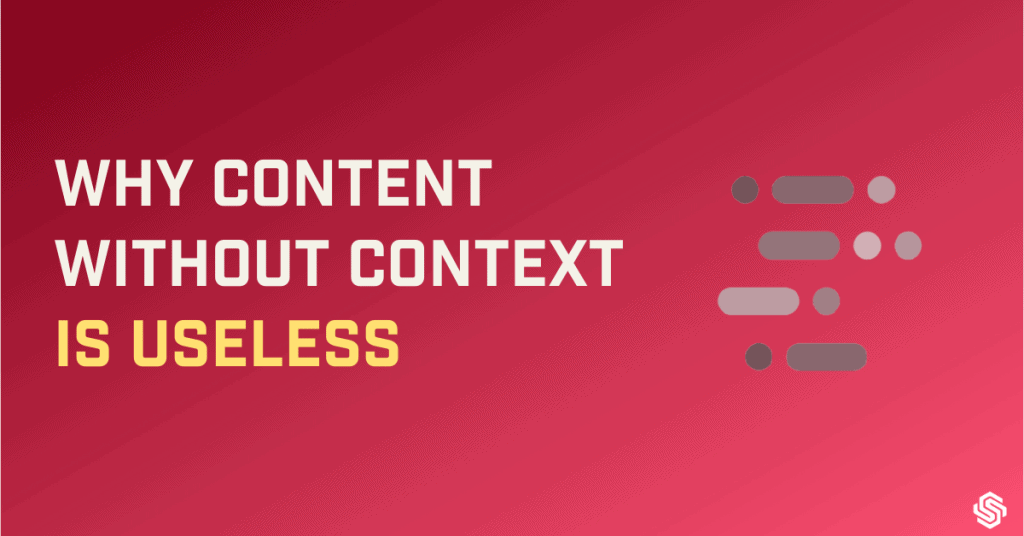Have you ever had mint chocolate ice cream?
I have had it, and I must admit, it’s a very unique and conflicting flavour which my palate had a tough time comprehending.
What’s more interesting is how I ended up trying it.
On a warm Saturday afternoon, I had gone to the airport to pick up a couple of my friends. After picking them up, on our way back, we decided to have some ice cream. We went into the ice cream shop, and one of my friends placed an order for a scoop of mint chocolate ice cream.
My other friend almost gagged and said: “How can you eat ice cream that tastes like toothpaste AND chocolate?”
The friend who was already devouring the mint ice cream looked up and said “Dude you either hate it, or you love it, there is no in-between. And I ABSOLUTELY love it.” and continued to chomp on it undeterred by the possible brain freeze.
I was a silent observer up until this point, but I decided to weigh in my opinion about mint chocolate ice cream and took a bite.
Needless to say, it was pretty disgusting – or at least that’s what I thought.
But people who love mint chocolate ice cream almost treat it like a religion and don’t care what you think about it.
That’s the beauty of mint chocolate ice cream.
You either worship it, or you hate it so much that neutral people are almost dying to try it to know whether they like it or hate it.
So, why am I telling you about mint chocolate ice cream?
When it comes to your marketing campaigns, be like mint chocolate ice cream.
Target the people who would absolutely love it and leverage people who might hate it to get more people to try it.
Resist the temptation to please everybody.
As uncomfortable as it might seem, to be effective with your marketing or even your business, you need to polarise your audience. You need to attract prospects and repel the ones who will never be your audience.
To understand what I mean, imagine that your prospects are spread across a spectrum. The leftmost part of the spectrum represents someone who is least likely to convert into your customer, and the rightmost part represents the one who is most likely to convert into your customer.
Ideally, what you need to be doing is targeting both the extremes. Once you target the extremes, everyone else falling in between is taken care of.
To identify who these extreme cases are going to be, you need something called “user personas”.
They are also called customer avatars, buyer personas, or buyer avatars. Pick your preferred word; it honestly doesn’t matter as long as you are creating user personas.
What are User Personas?

User personas are the ideal profile of your ideal customer.
Imagine you’re creating a Facebook account for your ideal customer, what are all the information you will be putting in?
You will start with the obvious ones like name, age, gender, location, and then proceed towards interests, choices and preferences.
Based on what you want to achieve and how you want to be perceived, you will start engaging with different kinds of content.
That’s precisely what you should be doing (and much more) with user personas.
What user personas will allow you to do, from a marketing perspective, is to deliver the right information at the right time, which is extremely relevant and useful to your customers.
When you do this, your customers are not just going to love it but reciprocate by paying you money for your product, service or offering.
If that was not a reason enough for you to be creating user personas, let me help you understand the importance of creating user personas.
Why do you need user personas?
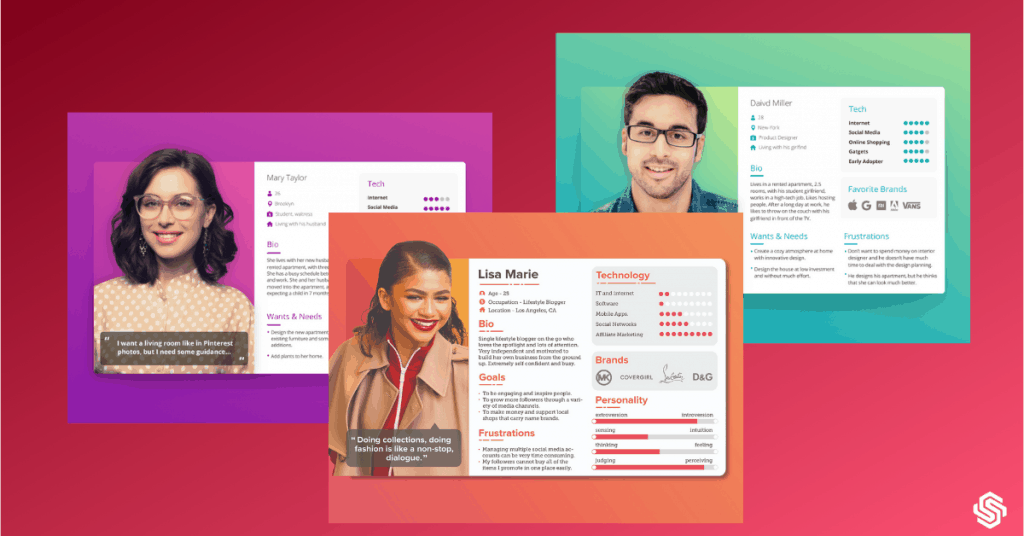
User Personas are not just your ideal customers. They are people. They have specific aspirations and motivations as well as challenges they face trying to achieve them.
User Personas will allow you to empathise with your target customers. You will be pushed to get into their shoes and see the world through their eyes.
You understand their dreams and goals, what motivates them and what challenges they are facing. Once you know this, you have to provide content which aligns with their dreams and goals.
This alone will dramatically increase the effectiveness of your marketing communication.
User personas are anti-ego-centric.
It’s not about you, your product or your service. It’s about the customers, their problems, their challenges and their aspirations. Your job is merely to communicate how you will deliver value and help them achieve their goals and overcome their challenges.
This comes from a deep understanding of your ideal customers.
It’s almost a mirror image of selling. You are not trying to sell. You’re trying to get your customers to buy.
Also, a user persona represents a segment of your audience.
When you create a user persona, what you’re doing is creating a representation of a group of people who are similar to that user persona.
It goes without saying that not everyone is going to have the same name, age, interests etc., but there is a good chance that their motivations and goals overlap.
So technically, when you say you are targeting a particular user persona, you are, in reality, targeting an entire segment.
Therefore, the more user personas you create, the more segments of your audience you are unearthing. And the more you do this, the more value you can add and most importantly, personalise your communication.
The best part is user personas won’t just help you with your marketing. In fact, it’s a term we marketers borrowed from the world of UI/UX.
Create user personas for your business or your product or service, and you can use it in various other fields like product development, design, sales etc.
But how do you create them?
How to create user personas

When you create the right user personas, your marketing campaigns will seem like a magic trick to your users. To them, it will almost feel like you have entered their mind and hacked into the conversation they were already having.
So, how do we create user personas?
For you to create the right user personas, you need broadly, three different types of data:
- Demographic data
- Professional data
- Psychographic data
Let’s understand each of these data sets and how you can draw insights from them.
Demographic data
This is a basic level data which will allow you to humanise the user persona. You start by describing all the essential demographic details of your ideal customers like:
- Name
- Age
- Gender
- Location
- Education Level
- Relationship status
- Interests
- Active channels (eg: Facebook, WhatsApp, Email)
More than helping you humanise your user personas, it will also allow you to draw crucial insights about your ideal customers.
For example, a person who is in the age group of 27-30 may have a lot more disposable income compared to someone in the 22-25 range.
The buying preferences of someone who is in a relationship will wildly differ from a person who is not in a relationship. The same can be said about the location. A person living in a tier 2 or tier 3 city will have a very different lifestyle compared to a person living in a metro city.
Most importantly, it will allow you to assess the demographic you can successfully deliver your offering to with the highest impact.
Professional data
This data set is especially handy if you are a B2B company, but it wouldn’t hurt to fill this up if you are a B2C company too. After all, every company is H2H (Human to Human).
Here are some data points that you can populate:
- Job title
- Income level
- Industry
- Size of their organisation
- Key Performance Indicators (KPIs)
- Reporting managers
Again, like the demographic data, there are plenty of insights you can draw from these data points, especially if you are a B2B company.
For example, if you’re a SaaS company, how can you help this persona achieve their KPIs? If there are other decision-makers involved, like reporting managers, how can you create communication that talks to them too? Can you create industry-specific case studies and white papers?
Psychographic data
Now this, ladies & gentlemen, is my favourite data set. This is what allows you to truly understand your customers inside out and has the power to make or break your marketing campaigns.
There are three vital data points you will need here:
- Dreams & goals
- Pains & fears
- Challenges & obstacles
To understand these three data points, you have to understand that the pains and fears represent the current state that they are in. Identify the crucial pain points of your customer with regards to your offering, and what are their fears? The biggest fear most people have is what I call the “What if?” fear. “What if I fail?” What if I don’t make it and people laugh?”. There are many variations of the same thing, but you get the drift.
The dreams and goals are what your audience wants to achieve that your offering can help them get there. More than dreams, these are their desires. Through your marketing communication, you need to paint a picture of what their life could look like once the problem is solved and their goals achieved.
But getting to this desired state is not easy for your audience.
There will be challenges and obstacles that will stop them from reaching this desired state. It would help if you also described what they have tried before to fix their problems and why it hasn’t worked.
I think this pictorial representation does a great job at explaining this:
All of this sounds great, but where do you get all of this data from?
How do you develop a user persona

Let me give you a heads-up; if you are just getting started with your business or marketing campaigns, it can be challenging to get your hands on this data because you may not know who your ideal customer is but it’s not impossible.
To start with, you can use fictitious data – data that you believe represents your ideal customer. This fictitious data represents a hypothesis, and your job is to go out there and test whether this hypothesis holds true.
If it holds true, great, continue working on it. If it doesn’t, go back to the drawing board and come up with a new user persona or hypothesis.
Honestly, that’s how I started, and it is better than starting with no data at all.
The second best way to do this is, are you ready for this… to ask your customers.
Yeah, it’s that simple.
Most marketers and business owners completely overlook the fact that most people want to be heard. They want someone to listen to their story.
I speak from personal experience, and I get insights into customer data in two ways: email responses and customer surveys.
Let’s look at email responses first. For this to work, you have to humanise your emails. Most email newsletters look like brochures which is a massive turn off.
Email marketing is NOT a broadcast medium alone. It is a two-way communication medium, and if you treat it that way, it can do wonders for your marketing.
In my email marketing sequence, the second email that goes out is an email introducing myself.
Believe it or not, it’s 934 words of me introducing myself and sharing my journey, and I lay everything bare. It’s a no filter introduction. More importantly, at the end of the email, I have this question:
What’s your story? Reply to this email and let me know. (I read all my emails)
If I had a rupee for everyone who responded with “Thank you so much for asking about my story. Nobody has ever asked me for my story”, I would be a billionaire.
They respond with a heartfelt introduction about their goals, dreams, struggles, challenges, failures, achievement and everything in between.
This gives me a unique insight into my prospect’s world, which is why I read through the hundreds of emails I receive every single day.
But not everyone responds.
That’s where surveys come into the picture.
A cleverly crafted survey allows you to extract vital information from your prospects or your existing customers which will give you substantial data.
I always float a survey to my customers to understand them better, and I have chosen 20 questions. Here are the questions and feel free to rip them off but make sure you tailor it for your niche and audience.
- May I know your name, please?
- Nice to meet you (name), when is your birthday?
- Great! Which city are you from?
- Fantastic! I’ve heard (city name) is a great place. Can you please tell me your gender?
- Super! I know most of us hated studying (at least I did), but what’s your education level?
- Good for you! What’s your profession, (name)?
- Look at you! And if you don’t mind me asking, what’s your relationship status?
- How do you like to spend your free time?
- If you could go back in time 10 years, what is the single piece of advice you would give to your younger self about your career?
- That’s amazing advice! Now, which social media channel do you DISLIKE the most?
- Can you elaborate on why you don’t like (social network)?
- How often do you check your email?
- How much do you like spending on yourself?
- Everybody has a different definition of success. When would you consider yourself successful?
- Good to know that. Do you think you have what it takes to become successful?
- It was nice to have you at my Weekend Content Workshop. How do you intend to use this newfound skill?
- That’s awesome! In that case, would you like to learn more about how to write content that is accessible and easy to relate to?
- How much are you willing to invest in yourself by signing up for some digital marketing courses?
Did you notice that I tried to make the survey conversational, unlike most boring surveys? You can check out the survey here (and probably fill it up if you like):
But most importantly, I want you to understand how I extract information out of the prospect subtly.
For example, this question: If you could go back in time 10 years, what is the single piece of advice you would give to your younger self about your career?
The answer to this question allows me to understand their regrets and in a way, their goals too. Similarly, the question: which social media channel do you DISLIKE the most?
I could have asked them which social media channels they like the most, but it isn’t easy to pick one. So, by asking for a social media channel they dislike the most, I now know where I SHOULDN’T be targeting them which is as good as knowing where to target them.
The question here: How much do you like spending on yourself?. This allows me to understand their disposable income which I then go on to loop back into my pricing. I also double-check it with this question: How much are you willing to spend on up-skilling yourself…
The more you do this, the better your understanding of your customer will be. When you understand your customer, you don’t have to sell; they will buy from you.
But the best way to understand all of this is to look at real-world examples and how I apply them.
Recommended: How to Speed up Your WordPress Site & Make It Load Faster for your Users
Real-life example of user personas and application (+ free user person template)
Let me walk you through how I market my Weekend Content Workshop using all the information that I have gathered.
As discussed earlier, my first source of information was my email inboxes. Having gone through hundreds of responses, I had a pretty good idea about who my target audience was.
I also ran the survey just to be sure and gather more perspective on my target audience. Now that I had all the information I needed, it was time to create my user personas.
Here is one of the user personas that I created using the information that I had:
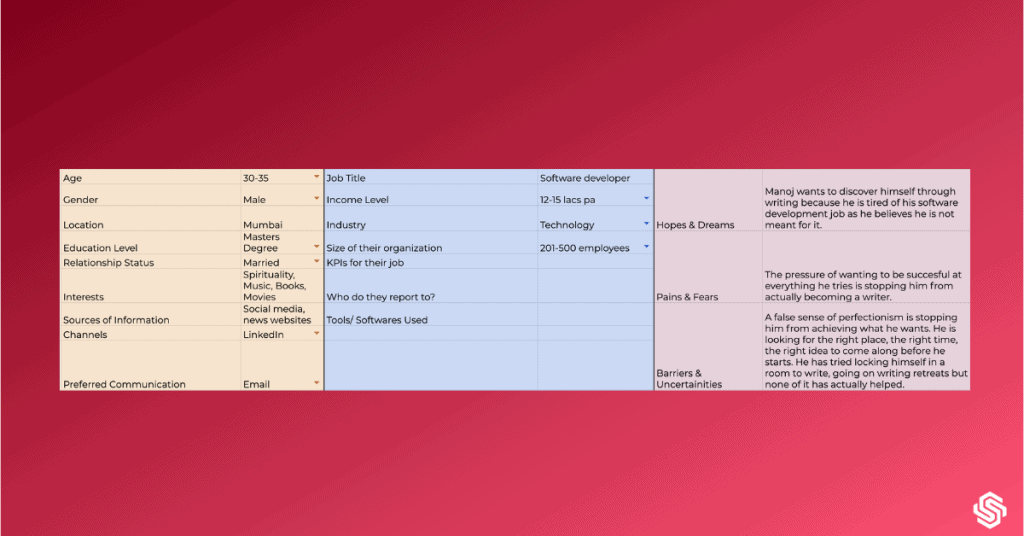
As you can see, there are three major data sets – demographic data, professional data, and psychographic data. Although this user persona is inspired by real people, it is still fictitious data.
Now, Manoj represents one segment of the audience who have similar goals, dreams and challenges. Similarly, I have created close to 20 such user personas. You can find 3 of them here:
The most significant application of these insights was in my Facebook Ads targeting. I realised that most of my target audience (especially for my Weekend Content Workshop) held a master’s degree. Also, more than 70% were from major metropolitan cities.
This was really useful in not just bringing the costs down but also increasing the quality of leads and customers that were coming in.
Although I had the targeting right, it was also important that I communicated and connected with them through my ad creatives and copy.
I noticed a pattern in my email responses. When it comes to writing, most of them had these fundamental problems:
- What to write
- How to write
- How to get people to read them
Without trying to be too fancy, I wrote a quick script which addressed these problems and shot a video ad. You can find the video ad here:
It’s a straightforward ad without any fluff. A lot of people appreciated the ad itself regardless of whether they converted or not. The reason it worked was that I kept it simple and spoke in their language, not mine.
I also realised that the other big problem most people had was they were of the misconception that their English needs to be perfect or that they need to have a specialised degree to be able to write.
I addressed this in my landing page here:
The other unsurprising obstacle people faced was – procrastination. Even if they were equipped with the right skill, they simply could not get themselves to write consistently or even get started.
I made sure I addressed this in one of my emails like this:
By having a clear understanding of who my customers are and what problems they face, I have had more than 3000 people attend the Weekend Content Workshop.
Regardless of what industry you are operating in, you can use the same approach and create very effective marketing campaigns that deliver results.
Click here to access my user persona template
Conclusion:
Creating a user persona is not something that you do once and forget about it. It’s not even something that you do every week or every month.
It’s a state of mind.
It’s a customer-centric approach to doing business, and I can assure you it’s timeless.
I too was of the impression that creating user personas can be overkill, but I quickly changed my mind once I realised how important and effective it could be.
Creating user personas is the first step to understanding your customer, but it definitely is not the last. How many user personas do you need to start, you ask? Just one is enough to get started with.
Have you used user personas before? What has your experience been? Let me know in the comments below.

